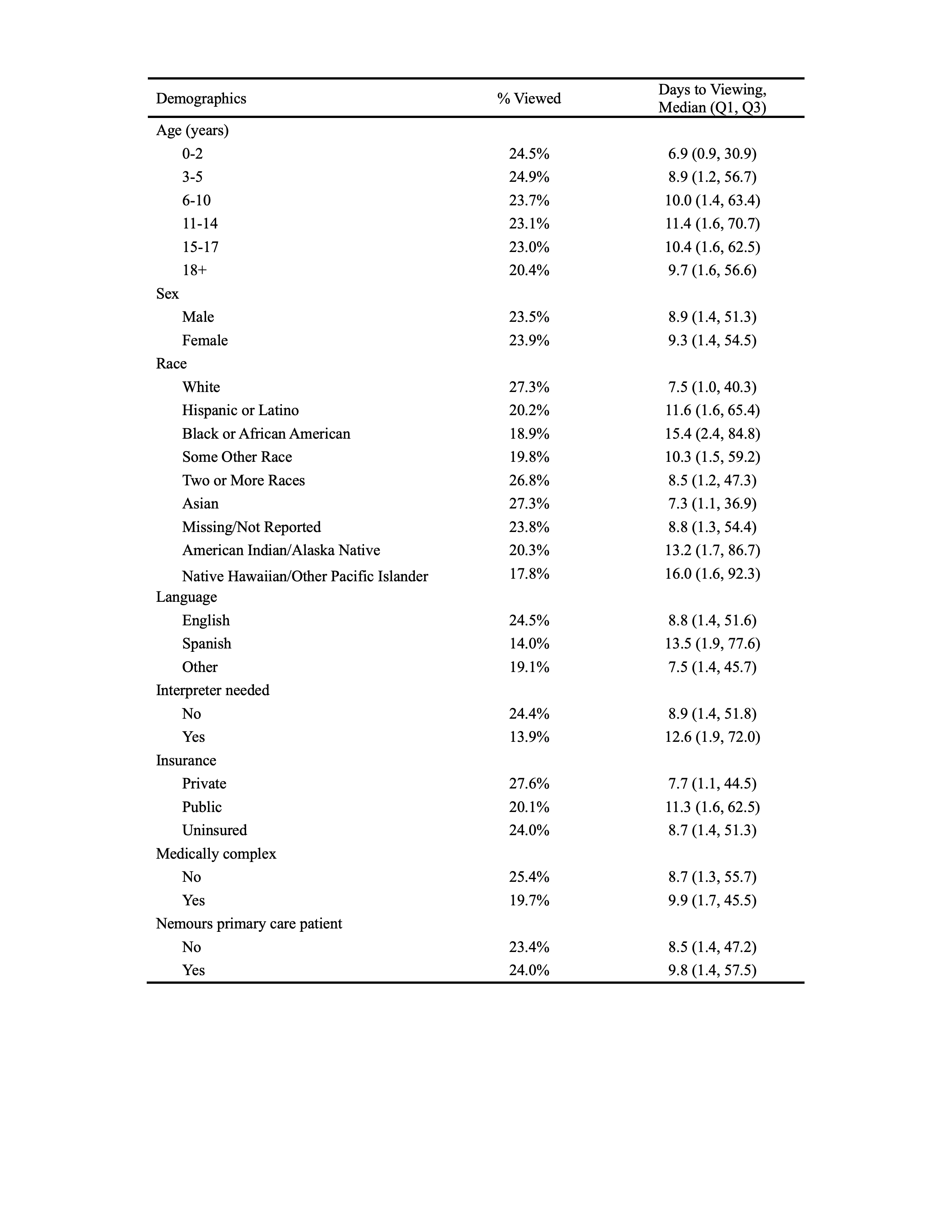Technology 3: Electronic Medical Records and Informatics
Session: Technology 3: Electronic Medical Records and Informatics
291 - The Digital Divide: Patient Portal Engagement and Note Viewership Across Demographics
Monday, April 28, 2025
7:00am - 9:15am HST
Publication Number: 291.6841
Michael Valente, Nemours Children's Health, Florida, Orlando, FL, United States; Samantha T. Kennedy, Nemours Children's Hospital, Orlando, FL, United States; Emily Craver, Mayo Clinic, Jacksonville, FL, United States; Sara Slovin, Nemours Children's Hospital, Wilmington, DE, United States; David W. West, NemoursAlfred I. duPont Hospital for Children, Wilmington, DE, United States; Gift Kopsombut, Nemours Children's Hospital, Orlando, FL, United States

Michael Valente, MD (he/him/his)
Chief Resident
Nemours Children's Health, Florida
Orlando, Florida, United States
Presenting Author(s)
Background: Online portals have been shown to enhance parent understanding of their child’s healthcare and relationship with physicians, and access has increased since the Cures Act in 2021 that mandated the release of health information to patients. However, this access has highlighted a “digital divide” among different racial and socioeconomic groups and there is need to study how patients utilize these electronic portals.
Objective: Describe demographic and clinical characteristics associated with activation of electronic patient portal and note viewership, which we hypothesize is influenced by demographic and clinical factors. This study aims to improve access to information for all families.
Design/Methods: We received IRB exemption to study portal activation among patients/caregivers at two pediatric hospitals with multistate outpatient and specialty clinics along with telehealth capabilities. We have collected demographic data and activation status of the portal for all patients seen between July 2022 – June 2023, as well as data on note viewership. Continuous variables were summarized using medians and categorical variables as percentages, with regression models used to determining odds ratios and 95% confidence intervals between groups, with p < 0.05 significant.
Results: In total, 70% (n=294,356/419,136) of patients had activated portals. Patients aged 3-5 (OR 1.11) and aged 6-10 (OR 1.05) compared to aged 0-2, and females (OR 1.04) were more likely to have an active patient portal. Hispanic (OR 0.89), Black (OR 0.58), Spanish speaking (OR 0.51), those needing interpreters (OR 0.66), publicly insured (OR 0.60) and uninsured patients (OR 0.83) showed lower portal activation. Medically complex patients (OR 4.11) and those with in network primary care (OR 3.69) had significantly higher activation rates. All differences were statistically significant (p < 0.05). 1,263,828 notes were collected, with viewership higher for outpatient (30%, n=260650/864119) than inpatient (10%, n=40353/405709) notes. Similar to portal activation trends, increased note viewership was associated with patients who were female, white, English speaking, or privately insured.
Conclusion(s): The findings highlight disparities in portal activation and note viewership among demographic groups, emphasizing the need for targeted interventions to bridge these gaps. By understanding the factors that influence portal usage, healthcare providers can develop strategies to enhance access and engagement, particularly for underserved populations, to ensure that all families benefit from the transparency and accessibility of electronic health records.
Demographics by patient portal activation (first encounter)
.png)
Notes Viewed by Patient Demographics


